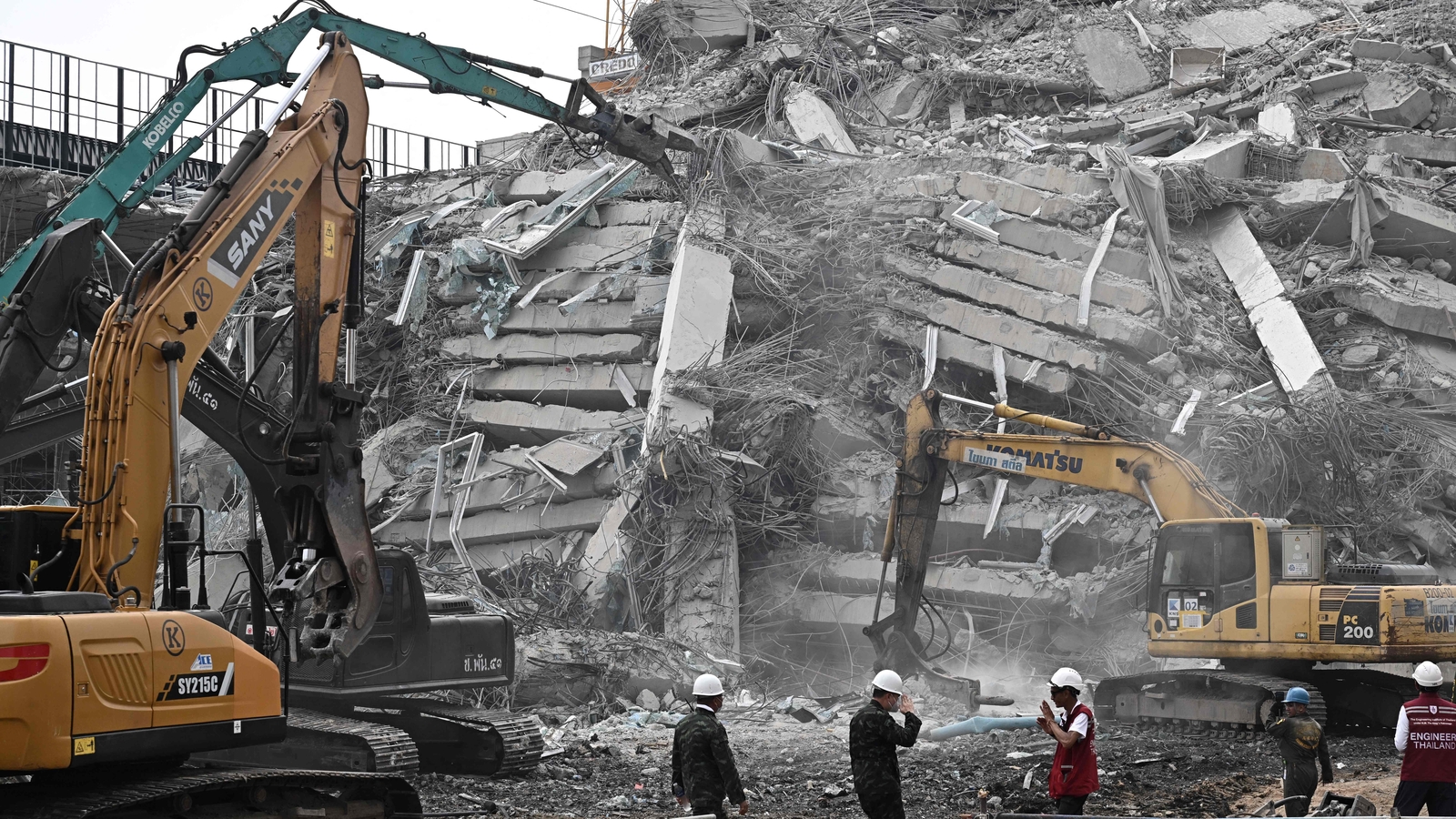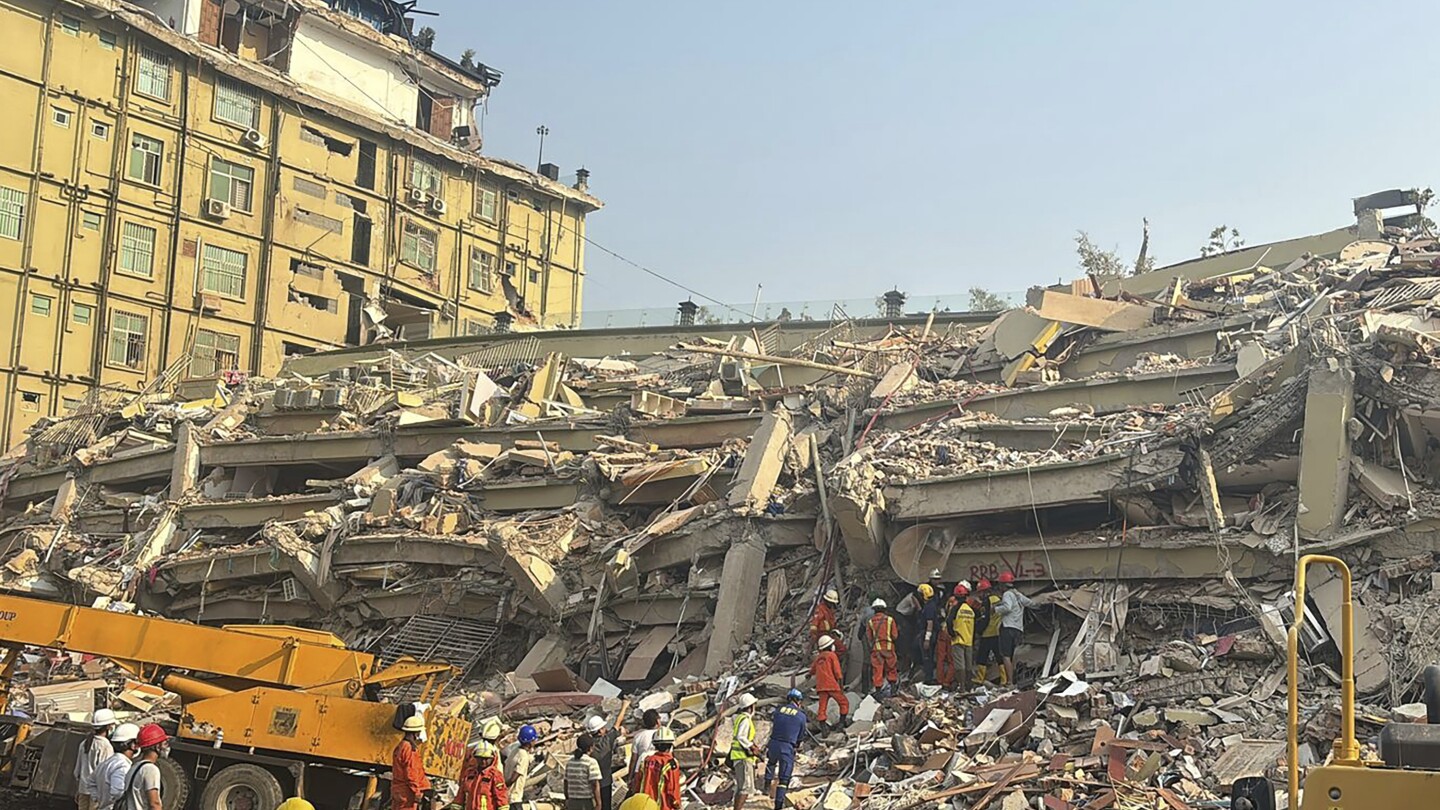A deadly 7.7 magnitude earthquake hit Myanmar, causing widespread devastation and claiming over 1,600 lives, with countless others still buried beneath the rubble. The epicenter near Mandalay led to the collapse of buildings and major infrastructure, exacerbating the challenges faced by emergency teams entering the affected areas. Amid the chaos, rescue efforts were impeded by damaged roads, downed bridges, and communication breakdowns, compounded by the ongoing civil conflict in the country.
The aftermath of the earthquake painted a somber picture in Myanmar's main cities, particularly Naypyitaw and Mandalay, with scenes of destruction and desperation becoming all too common. The smell of decaying bodies lingered, as locals and volunteers worked tirelessly to unearth survivors amidst the rubble. The blistering heat and limited resources added to the difficulties faced by those striving to assist the affected population.
Rescue operations in Myanmar were largely grassroots, with communities banding together to search for loved ones trapped in the debris. Foreign aid started to arrive, with countries like China, Russia, India, and others sending rescue teams and vital supplies. However, challenges persisted, as medical facilities were overwhelmed, shortages of essentials were reported, and displaced individuals struggled to access basic necessities.
The earthquake's impact extended beyond Myanmar's borders, shaking neighboring Thailand and leading to the collapse of a high-rise under construction in Bangkok. The tragedy claimed lives and left many injured and missing, prompting swift investigations into the building's structural integrity. Questions arose about the construction practices and oversight that may have contributed to the building's downfall, sparking concerns about safety standards in the region.
In the face of this dual crisis, the need for efficient response and coordinated efforts was paramount. With seismic activity presenting ongoing risks and the clock ticking on potential rescues, the focus shifted to supporting survivors, clearing debris, and providing essential services to those affected. The fragile infrastructure and the region's geographical vulnerabilities underscored the importance of disaster preparedness and rigorous building standards in mitigating future catastrophes.
As the search for survivors continued in both Myanmar and Thailand, the immense toll of the earthquake became more apparent. The humanitarian response, marred by the backdrop of political unrest and armed conflict in Myanmar, highlighted the complex challenges faced by aid organizations and first responders. The need for international support, coordinated relief efforts, and improved infrastructure resilience emerged as critical lessons from this tragic event.
In the aftermath of the disaster, the stories of resilience, courage, and solidarity emerged, as individuals and nations rallied to assist those in need. Amid the grief and devastation, glimmers of hope shone through as communities came together, rescue teams worked tirelessly, and survivors clung to the possibility of being reunited with their loved ones. The seismic tremors that shook Myanmar and Thailand served as a stark reminder of the unpredictable forces of nature and the enduring spirit of humanity in times of crisis.


